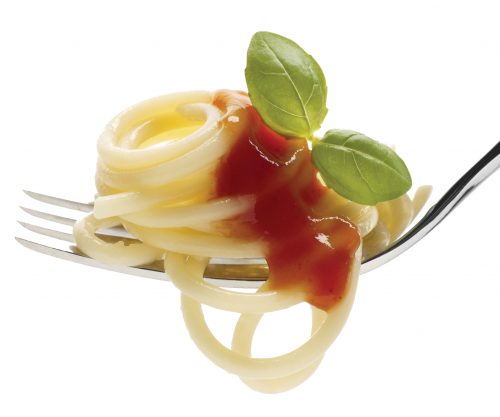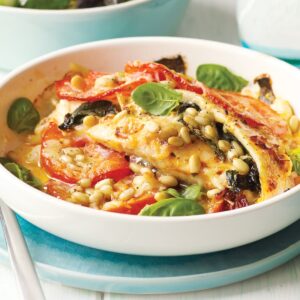
Pasta is easy to prepare, versatile and delicious. Nutritionist Brigid Chunn investigates the variety of fresh pasta options available.
Traditional pasta is made using semolina flour — ground durum wheat — a hard, high-protein wheat that keeps its shape when dried. Water, salt and sometimes eggs are added. Dried pasta comes in an enormous range of shapes and sizes.
Fresh pasta is also made from durum semolina (wheat) and always has egg added and a higher water content. Consequently, fresh pasta needs to be refrigerated to prevent spoiling and eaten within three to four days of opening.
Fresh pasta is generally available in long form (eg. spaghetti) or filled (eg. tortellini, ravioli). It is a very quick meal as it cooks in only a few minutes.
How much is one serve?
A serve of fresh pasta (as listed on pack) varies from 138g to about 160g (uncooked) for the filled varieties. This equates to 206g to 240g cooked pasta. For the long form or flat fresh pasta, a serve is usually listed as 100g uncooked (190g cooked).
Pasta nutrition
Pasta is a source of fibre, carbohydrate and protein with useful amounts of a range of vitamins and minerals.
On average, 100g fresh long-form or flat uncooked pasta (190g cooked) provides about 1200-1400kJ, 12g protein, 4g fibre, 55-65g carbohydrates, 230mg sodium, 3g fat with negligible saturated fat. Nutrition values vary from brand to brand. The nutrition in filled pasta varies depending on the filling. It is important to read the nutrition information panel on the packets.
Sodium
When cooking pasta it is normal to add a little salt to the water to help bring out the flavour. We recommend you check the sodium content before doing so. If it is more than 300mg sodium per 100g pasta, you do not need to add salt.
If you are watching your sodium intake, we recommend choosing unfilled pasta with 250mg or less sodium per 100g (uncooked pasta) and choosing filled products with 750mg or less per serve. Less is better.
Protein
Pasta — especially filled pasta — can be a good source of protein. Filled pasta is often used as a complete meal (except for the added vegetables) so the protein component is important. For example, Latina Fresh Cheese and Spinach Tortellini has 37g protein per serve whereas Pasta Nostra Pasta Pronto Fresh Garden Spinach & Ricotta Ravioli has just 10.4g per serve.
We recommend choosing a filled pasta with 15g or more protein per serve. This equates to about 20 per cent of the minimum daily requirement for an average adult.
Pasta cooking tip
Allow about one litre of water for every 100g of pasta. Place the pasta in the water when it is boiling, not just hot. Cooking times depend on the kind of pasta. Fine, freshly-made pasta often needs no more than two to three minutes. It is ready when it rises to the surface of the boiling water. A reliable way to test if pasta is cooked is to taste it.
Note
While standard pasta is a useful source of fibre, the fibre content, unfortunately, is not usually shown on the label. Wholemeal pasta is generally made using wholemeal flour mixed with durum wheat and has a higher fibre content.
Tip
Take care with toppings. Pasta sauce and grated cheese on top can turn a healthy pasta meal into a meal that’s high in kilojoules, sodium and saturated fat.
How to choose
Look for:
- 3.5g or less saturated fat per serve
- 15g or more protein per serve (more important for filled pasta)
- 250mg or less sodium per serve (unfilled pasta)
- 750mg or less sodium per serve (filled pasta)
www.healthyfood.com










